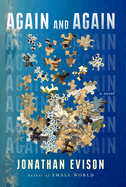
| Publisher: | Dutton | |
| Genre: | Family Life, General, Literary, Fiction, Historical | |
| ISBN: | 9780593184158 | |
| Pub Date: | November 2023 | |
| Price: | $28 |
| Fiction |
by Jonathan Evison
Eugene Miles is either 105 or more than a thousand years old. In Again and Again, his eighth novel, Jonathan Evison (Small World; Lawn Boy) presents another endearing protagonist. Whether "Geno" is a fabulous storyteller or a time-traveling wanderer, his story is a life-affirming saga of hope and the enduring power of love.
Ensconced in Desert Greens, a California eldercare facility, as a "certifiable recluse," grumpy Geno's "lone aspiration now is to ride this life out." When Angel, a 24-year-old health-care aide, asks to hear his stories, he shares his previous existences--there are several, including one as "Whiskers," Oscar Wilde's cat--in elaborate, historic detail. Angel's sincere attention awakens Geno's narrative skills. He regales the young man with tales, including one as Euric, a lowly Visigoth in Spain; there, in "one meaningful life," he met and lost his true love. He also tells Angel about his experiences as a World War II marine. Geno talks of dying: "But the fact is, I'm ready to die. There is nothing holding me here. I only hope that I am not born again, for I don't think I could endure another loveless existence." Angel entreats him: "Who else is gonna give me advice? And who else is gonna tell me stories this good?"
Like Angel, readers will embrace Geno's colorful quest to recapture true love and appreciate the tender friendship between the men. Stories provide hope, and in Evison's history-rich narrative, readers will find fabulous tales that send a message of love straight to their hearts. --Cheryl McKeon, Book House of Stuyvesant Plaza, Albany, N.Y.

| Publisher: | Algonquin | |
| Genre: | Family Life, 20th Century - World War II, General, Literary, Fiction, Historical | |
| ISBN: | 9781643752341 | |
| Pub Date: | November 2023 | |
| Price: | $29 |
| Fiction |
by Lauren Grodstein
Lauren Grodstein's novel We Must Not Think of Ourselves is a quietly terrifying immersion in the experience of Jewish occupants of Poland's Warsaw Ghetto during 1940-42. An English teacher before internment, widower Adam Paskow continues his calling behind the heavily guarded walls. Late one afternoon, a man named Ringelblum, who wants Adam to join an archival project, approaches him in his classroom: "It is up to us to write our own history," he tells Adam. "Deny the Germans the last word."
Adam, Grodstein's narrator, writes journal entries for Ringelblum's project, because "there was no reason not to comply." Having lost his beloved wife four years earlier and now his livelihood, home, and freedom, Adam stumbles through a new life. He helps dispense sparse servings of soup at the Aid Society and, via conversation and poetry, teaches English. He transcribes interviews with his students, and the men, women, and children he lives with. He remembers his wife, waits for liberation, and then begins to understand that it may not come.
Grodstein (The Explanation for Everything; Our Short History) bases her historical novel upon a few real characters and events. Emanuel Ringelblum did oversee an archival project, which provides the background for this realistic, heartrending glimpse into the lives of Jewish occupants of the Warsaw Ghetto. In his detailed recording of other lives and of his own, Adam reveals that love may be found even in the starkest of situations, and he faces the hardest of choices about sacrifice: Who will you save if you can't save them all? --Julia Kastner, librarian and blogger at pagesofjulia
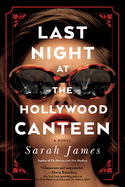
| Publisher: | Sourcebooks Landmark | |
| Genre: | Women, 20th Century - World War II, Fiction, Historical | |
| ISBN: | 9781728252254 | |
| Pub Date: | November 2023 | |
| Price: | $16.99 |
| Fiction |
by Sarah James
Last Night at the Hollywood Canteen, the second novel by Sarah James (The Woman with Two Shadows), is an Old Hollywood-era whodunit so faithful to its place and time that scenes seem to play out in black and white.
It's 1943, and Hollywood's Pacific Pictures has given narrator Annie Laurence, a New York playwright, a screenwriting contract: a rep saw and loved her Broadway murder mystery. In California, Annie becomes friendly with a handful of industry people who call themselves the Ambassador's Club, which includes the Dorothy Parker-like critic Fiona Farris. Annie already knows of Fiona: in a review of Annie's Broadway play, the critic alluded to the playwright's scandalous romantic situation back in New York. But Annie is hardly the only victim of the critic's pen, so when Fiona turns up dead at the Hollywood Canteen--a gathering spot for servicemen that's run by industry volunteers, Annie among them--there are plenty of suspects, especially within the Ambassador's Club.
Like Ava Barry's Windhall and Craig Russell's The Devil's Playground, Last Night at the Hollywood Canteen precisely captures a classic Tinseltown drama's mores and decor, complete with endless cigarettes and unchecked alcoholism. The Hollywood Canteen--a real Old Hollywood hot spot--is a character in its own right, and James works in choice cameos by habitués Bette Davis and Rita Hayworth, among others. Fiona's beef with Annie's Broadway play was that its conclusion "disappoints," but James's big finish should please readers--provided they aren't looking for a Hollywood ending. --Nell Beram, author and freelance writer

| Publisher: | Catalyst Press | |
| Genre: | Women, Africa - Southern Africa, World Literature, General, Literary, African American & Black, Fiction, Historical | |
| ISBN: | 9781946395962 | |
| Pub Date: | November 2023 | |
| Price: | $19.99 |
| Fiction |
by Tsitsi Mapepa
Debut Zimbabwean author Tsitsi Mapepa invitingly reveals almost a quarter-century of events--both quotidian and transformative--that shape the women of the Taha family in Ndima Ndima, presented as interlinked stories. Mapepa writes with a welcoming, unadorned intimacy, recounting experiences as if talking with a friend, ensuring every word is heard clearly.
In autumn 1990, Zuva moves with her husband, Mwedzi, and their four daughters from a small city to Harare. Zimbabwe's capital then is still "new raw land" surrounded by dense grasses where snakes and other dangers lurk. With a sickle and tenacity, Zuva tames the bush, clearing hectares of land to nurture a garden while creating safety around the home that Mwedzi builds himself. The neighborhood, following Zuva's unbending leadership, is eventually able to rid the bush of more brutal threats--particularly men eager to attack women out alone. Here, Zuva's girls, Ruth, Hannah, Abigail, and Nyeredzi--from oldest to youngest--will grow up, each coming of age into vastly different futures. Mapepa bestows her narrative spotlight on Zuva and Nyeredzi: Zuva with her powerful past as warrior and former royal, Nyeredzi with her uncompromising strength and inherited wisdom. Mapepa follows their unbreakable, complicated mother-daughter bond across decades and distance.
Like her literary Zimbabwean compatriots NoViolet Bulawayo and Tsitsi Dangarembga, both authors of Booker Prize shortlisted titles, Mapepa gifts savvy international readers with illuminated windows into their mutual native country. Beyond the novel's culturally and historically specific details, Mapepa's characters inspire empathy as strong mothers, daughters, sisters, and women in a borderless, (still) male-dominated world. --Terry Hong
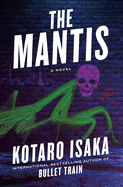
| Publisher: | Overlook Press | |
| Genre: | World Literature, Japan, Crime, Suspense, Thrillers, Fiction | |
| ISBN: | 9781419769474 | |
| Pub Date: | November 2023 | |
| Price: | $27 |
| Starred | Mystery & Thriller |
by Kotaro Isaka, trans. by Sam Malissa
It's a rare author who can make killers come across as empathetic and wise, but Kotaro Isaka (Three Assassins) has done just that with the superb and intricately plotted thriller The Mantis, translated from the Japanese by Sam Malissa. It's the third of Isaka's loosely connected novels about the crime shadow world in Tokyo that started with Bullet Train.
Kabuto (an alias) has been an assassin for decades. Despite being one of the best in the trade, he now has a wife and son--who know nothing about his side hustle--and wants out of the business. But his handler, called the doctor (his real profession), won't let Kabuto off easily. The doctor orders the assassin to take on high-risk assignments before he can retire, which makes Kabuto wonder if the only way he can quit is by dying.
Though Kabuto does commit violence, it isn't graphic and the novel is quite humorous. Kabuto doesn't break a sweat while facing down deadly opponents, but at home he's terrified of his strong-willed wife and tiptoes around her, literally and emotionally. Nevertheless, Kabuto loves her and believes his family is more than he deserves. He teaches his son that, because what's right or wrong may not always be obvious, one should strive to be fair: Kabuto always allows his targets a fight. And because life is hard, it's enough to simply "[h]ang in there and do your best." About halfway through the novel, the author introduces a bold twist that might make readers wonder, "What the...?"--but it leads to a satisfying and moving end. --Elyse Dinh-McCrillis, reviewer and freelance editor at The Edit Ninja

| Publisher: | Acre Books | |
| Genre: | Classics, Fantasy, Contemporary, General, Medical, Literary, Fiction, Science Fiction | |
| ISBN: | 9781946724694 | |
| Pub Date: | November 2023 | |
| Price: | $20 |
| Science Fiction & Fantasy |
by Lindsey Harding
Four women embark on a plastic-surgery cruise (yes, on a literal ship), planning varying degrees of physical transformation and hoping to ease the deeper problems with which each struggles. Pilgrims 2.0, Lindsey Harding's debut novel, never quite opines on the thorny issues it unearths, instead laying them bare for readers to come to their own conclusions.
This delightfully unhinged speculative work lays out a myriad of character traumas and cultural issues without ever feeling like a sermon. Lyla, for example, wants the experience of being pregnant, morning sickness and all, even though her infertility means it can't actually result in a baby. Annalie has opted to completely reconstruct her appearance; she wants to escape the reality that her own face is a constant reminder of her deceased twin. Harding lightens the gut-punching depictions of grief with the absurdity of shipboard plastic surgery and the futuristically drastic procedures for which the women sign up. The tension mounts when Larry, one of the all-male crew and an agent of literary chaos, starts down a path that will inevitably result in dire consequences for those involved.
Pilgrims 2.0 navigates these delicate extremes with lavishly tranquil settings and prose that reads like a textual version of an ASMR video, leaving readers with tingles. The crew prepares the ship so that by morning, "the rooms and transitioning spaces would be ready for passengers, sparkling and sanitized, the air saturated with breathable calm." All said, it's a cutting and satirical romp that brings both laughter and moments of real poignancy to the proverbial surgery table. --Carol Caley, writer
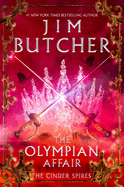
| Publisher: | Ace | |
| Genre: | Epic, Fantasy, Steampunk, Fiction, Action & Adventure, Science Fiction | |
| ISBN: | 9780451466822 | |
| Pub Date: | November 2023 | |
| Price: | $30 |
| Science Fiction & Fantasy |
by Jim Butcher
A secret superweapon capable of wiping out entire populations tips a world into full warfare in the action-packed The Olympian Affair, second in the steampunk Cinder Spires series from Jim Butcher (The Aeronaut's Windlass).
Humanity has long lived in the Spires, high above the dangers of the planet's surface. Fleets of airships sail among them, powered by ether and carrying out trade--and, of course, war. The Spire of Aurora's armada has unleashed a new weapon that has completely destroyed some smaller outposts, and it won't be long before they take on more ambitious targets. Spire Albion will need all its diplomatic force at the upcoming trade summit at Spire Olympia in order to gather allies to stand against them, but there may be dissent growing in the Auroran ranks. Not everyone is comfortable with wielding Spire-destroying weapons.
The result is a thrilling tale of high-stakes duels, monstrous creatures, and diplomatic negotiations featuring a wide cast of appealing characters, including some talkative cats. Although this is the second in the series, new readers and those who haven't read The Aeronaut's Windlass since its release in 2015 will quickly be able to orient themselves. The multiple plot threads, including battles between airships and opponents facing each other down with crossed blades, sometimes move around so much that a chapter's cliffhanger may dangle for some time, but any frustration is purely due to the successful creation of suspense. Readers will be eager to see where the series goes next. --Kristen Allen-Vogel, information services librarian at Dayton Metro Library
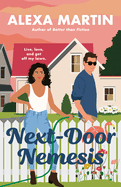
| Publisher: | Berkley | |
| Genre: | Romantic Comedy, Romance, Fiction | |
| ISBN: | 9780593337257 | |
| Pub Date: | November 2023 | |
| Price: | $17 |
| Romance |
by Alexa Martin
Alexa Martin (Better than Fiction; Mom Jeans and Other Mistakes) brings together an uptight real estate agent and a down-on-her-luck Hollywood screenwriter in the hilarious and charming Next-Door Nemesis. Collins Carter was a television writer until she went ballistic over her lying ex-boyfriend. The video of her meltdown went viral, and she lost her job.
Back in her childhood home in Ohio, Collins is horrified to discover that her high school nemesis, Nate Adams, is not only a successful real estate agent but he's also running for president of the HOA in her parents' neighborhood. When he issues a citation against a tree her beloved father planted, Collins decides she will use her unemployment period to also run for the HOA presidency--and put Nate in his place.
Next-Door Nemesis is a witty, lovely romance. As Collins, who is biracial, navigates being one of the only BIPOC people in the suburbs and faces down the boy who made her doubt herself, she realizes she's capable of far more than she thought. Martin accurately captures the woes of many people in their late 20s, who realize life isn't going to go quite the way they thought it would. And as Nate and Collins slowly become reacquainted and realize there is a lot of good in each other, readers will be rooting for them to work out their differences. Sexy and funny, Next-Door Nemesis is perfect for fans of Jasmine Guillory or Lynn Painter. --Jessica Howard, freelance book reviewer
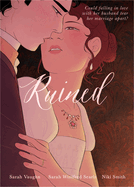
| Publisher: | First Second | |
| Genre: | Historical Fiction, Humorous, Romance, Comics & Graphic Novels | |
| ISBN: | 9781250769350 | |
| Pub Date: | November 2023 | |
| Price: | $28.99 |
| Starred | Graphic Books |
by Sarah Vaughn, illust. by Sarah Winifred Searle, Niki Smith
A marriage of convenience turns into happily-ever-after in Ruined, a character-driven graphic novel and historical romance from powerhouse team Sarah Vaughn (Sleepless), Sarah Winifred Searle (The Greatest Thing), and Niki Smith (The Deep & Dark Blue).
When society declares Catherine Benson "ruined," she's forced to marry. Enter penniless, brooding, and devastatingly handsome gentleman Andrew Davener, who needs her dowry to restore his crumbling estate. After an intensely awkward wedding day and an unsuccessful wedding night, the two build a foundation of respect and friendship. This is very much a romance novel, so as they bring the estate and its accounts to rights, they develop feelings for each other--despite their best intentions. Both are convinced the relationship remains transactional, even as they begin sleeping together and enjoying the company of each other's friends. The two-steps-forward-one-step-back nature of their romance provides a delicious tension until a well-deserved happy ending.
Fans of Sarah Winifred Searle will recognize some of the hallmarks of their work: limited shading; a dreamy, muted palette in purposely romantic shades of mauve, purple, and pink; and expressive eyes and less-defined mouths and noses. Niki Smith's stamp is evident as well, with defined inks that highlight the historical backgrounds while keeping the characters at the fore.
Ruined also features a diverse secondary cast, thoughtfully developed character arcs, and a lovingly rendered Regency setting. Readers looking for a quieter Bridgerton or a more diverse, steamier Austen novel will love this graphic novel. --Suzanne Krohn, librarian and freelance reviewer

| Publisher: | Fox Chapel | |
| Genre: | Cooking, Cookies, Methods, Baking, Courses & Dishes | |
| ISBN: | 9781497103887 | |
| Pub Date: | November 2023 | |
| Price: | $14.99 |
| Food & Wine |
by Kate Woodson
In Classic Cookies: 166 Favorite Recipes to Enjoy All Year, Kate Woodson (Beautiful Boards & Delicious Charcuterie for Every Occasion) offers tips for delicious treats to satisfy any sweet tooth, including old-fashioned favorites sure to stir up nostalgia for cookie-jar staples.
Veteran bakers will smile in recognition at the recipes they have long served their families, but this collection is also ideal for young newcomers to the kitchen. A number of "no bake" treats eliminate hot ovens, and kid-favorite ingredients abound, with crispy cereals, marshmallows, chocolate chips, peanut butter, and salty snacks among them. In sections with such titles as "Traditional," "Bars," and "Holiday," step-by-step instructions and large, full-color photos simplify the creation of these 166 goodies, including some gluten-free recipes. Woodson's spins on "classics" include four snickerdoodle variations, the most unique being a pumpkin-cookie doodle with a cheesecake filling. She updates the ever-reliable oatmeal cookie with intriguing creations like Chocolate Chipotle, Chocolate Cranberry, and gluten-free Oatmeal-Cocoa Macaroons. Traditional holiday favorites are here: Woodson dresses up pinwheel cookies as colorful Holiday Swirls, and gives divinity candy a kick with Red Hots. She treats readers to Pecan Snow Drops, Eggnog Biscotti, and Nutcracker Peanut Blossoms. Beloved thumbprints become "Snow People" with an easy Frosty-inspired decoration.
Classic Cookies: 166 Favorite Recipes to Enjoy All Year is the perfect addition to a cookbook collection for experienced or beginning bakers, offering traditional favorites as well as new twists on old-time goodies to enjoy in any season. --Cheryl McKeon, Book House of Stuyvesant Plaza, Albany, N.Y.

| Publisher: | Morrow | |
| Genre: | Biography & Autobiography, Pets, Training & Showing, Personal Memoirs, Dogs, Essays & Narratives | |
| ISBN: | 9780358674306 | |
| Pub Date: | November 2023 | |
| Price: | $35 |
| Biography & Memoir |
by Alexis Devine
Alexis Devine is not a scientist or expert in animal behavior, but through patient trial and error she teaches her dog to talk in the fascinating true story I Am Bunny: How a "Talking" Dog Taught Me Everything I Need to Know About Being Human.
When a breeder of sheepadoodles (three quarters poodle and one quarter Old English sheepdog) advertises an impending litter of puppies, Devine quickly adds her name to the wait list. Soon after, Bunny joins the Devine household. The author initially envisions Bunny as a companion to help address some past trauma, but Bunny soon becomes more like a therapist who happens to be a dog.
Teaching Bunny to communicate starts out simply enough. Devine sees a video of a pet being taught to press a button that plays a prerecorded message. So every time she takes Bunny for a walk, she says, "outside," grabs a leash by the door, presses a button near the exit that plays a recording of the same word, and takes Bunny out. Further inspired by an article about a speech language pathologist who taught her dog multiple commands this way, Devine adds more buttons for words such as sit, come, focus, down, touch. When the button count expands significantly, the dog begins to put rudimentary sentences together. In communicating with Bunny, who can share her feelings and even describe her dreams to her human, Devine learns how to better stand up for herself, providing herself and readers with a deeper sense of empathy and patience. --Paul Dinh-McCrillis, freelance reviewer

| Publisher: | Abrams | |
| Genre: | Industries, Entertainment, United States, Business Aspects, Business & Economics, General, Comedy, Censorship, History, Performing Arts, Political Science | |
| ISBN: | 9781419760983 | |
| Pub Date: | November 2023 | |
| Price: | $30 |
| History |
by Kliph Nesteroff
Bad news for those who like to fume that this is a time of unprecedented offense-taking and oversensitivity: Kliph Nesteroff's eye-spinningly illuminating probe, Outrageous: A History of Showbiz and the Culture Wars, offers evidence that, for good or ill, it has ever been thus.
Nesteroff (The Comedians) traces American show business back to the 1830s, when blackface minstrel shows generated complaints, but not every grievance since then has been as well-founded. As Nesteroff marches chronologically through a history of public outrage, barely a paragraph goes by that won't inspire a face-palm or a face-plant. In 1919, New York City tried to ban the shimmy because the dance was "unladylike" and "shameless evidence of debauchery." Decades later, two prominent evangelists went after Simon & Garfunkel's ballad "Bridge over Troubled Water" because they believed it was a "paean to heroin." A piece of entertainment might be attacked from both sides, as when the right denounced the 1992 film Basic Instinct for its sexual explicitness and the left decried its homophobia.
Nesteroff submits that there's no less freedom of expression today: "The haters and complainers of social media are used as evidence that 'you can't joke about anything anymore,' but the same argument existed in the 1950s and '60s when the majority of complaints came through the mail." Outrageous can sometimes read less like a well-argued case than like a catalog of ridiculousness, but it's a valuable record, and its dozens of examples are themselves worthy of, if not outrage, then a chuckle. --Nell Beram, author and freelance writer
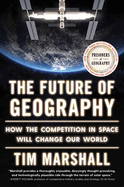
| Publisher: | Scribner | |
| Genre: | Technology & Engineering, Human Geography, Geopolitics, Social Science, Aeronautics & Astronautics, Political Science | |
| ISBN: | 9781668031643 | |
| Pub Date: | November 2023 | |
| Price: | $28 |
| Political Science |
by Tim Marshall
Tim Marshall (The Power of Geography; Prisoners of Geography) tackles the final frontier of geopolitics in The Future of Geography: How the Competition in Space Will Change Our World. As Marshall eloquently argues, geopolitical theorists have historically factored in "place, distance, and supplies when assessing the limits of what a country could and could not achieve" and that "astropolitics" does this too--but with much more distant places and much more complicated supply-chain challenges.
Marshall walks readers through the history of astronomical knowledge, from the ancients studying the stars to the Cold War space race to the modern advances of nations like China, India, and Israel. He shows how political tensions between the USSR and the United States led directly to exploration and innovation, and how that is now happening again as many nation-states and private companies race to be the first to begin a permanent moon settlement.
An interesting blend of history, science, and politics, The Future of Geography is a well-researched look at a variety of contemporary issues. As Marshall points out, the "exploration, and exploitation, of the New World shaped the last five hundred years of history" and the potential exploration of other planets and systems is sure to shape the next 500. In The Future of Geography, Marshall calls for "shared commitments to transparency" in order to engender a peaceful collaboration that can benefit mankind all together, rather than a potentially violent, militaristic version of space exploration which will leave some nations lagging behind the more technologically advanced. --Jessica Howard, freelance book reviewer
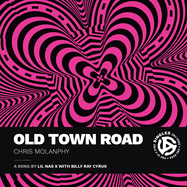
| Publisher: | Duke University Press | |
| Genre: | Music, Rap & Hip Hop, Genres & Styles | |
| ISBN: | 9781478025511 | |
| Pub Date: | November 2023 | |
| Price: | $19.95 |
| Starred | Performing Arts |
by Chris Molanphy
The hit song "Old Town Road" by Lil Nas X (a persona of Montero Lamar Hill) drew more attention than most chart-topping tunes for a number of fascinating reasons that Slate columnist Chris Molanphy (Kurt Cobain: Voice of a Generation) elucidates in Old Town Road. For one, the single stayed at the top of the charts for longer than any other. Also, Billboard, which tracks song performance by genre, forbade it from being tracked as a country single, despite its signifiers as one.
Molanphy's investigation of the song's cultural moment ranges back to the history of race and country music; the cross-pollination between rap, hip-hop, and country; and the Internet's role in making digital music viral. He writes, "Montero Lamar Hill had organically created a proudly artificial cultural product: a heartfelt joke song, built out of a sample of an alternative rock band, sped up by a Dutch beatmaker Hill had never met, that Hill transformed into a country anthem with a hip-hop beat."
Molanphy's astute analysis shows readers the full cultural 360 in tracking the success and controversy of the song, the artist, and the evolution of online platforms like TikTok and YouTube to democratize the distribution and awareness of music. He also discusses the role that Lil Nas X's queerness has played in his success and post-"Old Town Road" career to date. Molanphy's book is a masterful and entertaining piece of cultural studies that, at 152 pages, takes exactly the time it needs to tell its story. --Elizabeth DeNoma, executive editor, DeNoma Literary Services, Seattle, Wash.
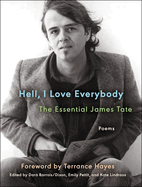
| Publisher: | Ecco | |
| Genre: | American, Love & Erotica, Death, Grief, Loss, General, Poetry, Subjects & Themes | |
| ISBN: | 9780063306073 | |
| Pub Date: | November 2023 | |
| Price: | $17.99 |
| Starred | Poetry |
by James Tate
The poetry of James Tate (The Government Lake) lands like a perfectly wrapped gift for those who love words and love the way images can take flight in unexpected and hilarious ways. The editors of Hell, I Love Everybody: The Essential James Tate--Dara Barrois/Dixon, Emily Pettit, and Kate Lindroos--know it and offer this collection of his work, complete with a stunning foreword by poet Terrance Hayes. Hayes spins Tate's own words into newfound gold, weaving them throughout as he explains the "defamiliarizing feel" and the way the "subtextual pang you find in a Jim Tate line, a deadpan panic, creeps into the echoes." This set of 52 poems opens with "Goodtime Jesus," which concludes with the line used as the book's title, and from there the collection unfurls, one brilliant, comically absurd poem after another.
Tate's poems have an improv quality, with fully realized characters "yes and"-ing their way through every line. Take, for example, "A Largely Questioning Article Offering Few Answers." In this poem, Roberta arrives home from the hospital, tearfully explaining that the doctor had died: "When he entered Mother's room he was so startled he had a/ heart attack." The exchange that follows builds absurdity upon absurdity but always makes a strange sort of sense. Readers will delight at the humor and marvel at the quiet insights; both things are often crowded against each other, as seen in "My Felisberto:" "But there is a place for darkness and obscurity/ without which life can sometimes seem too much,/ too frivolous and too profound simultaneously." --Sara Beth West, freelance reviewer and librarian
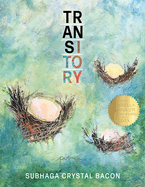
| Publisher: | BOA Editions | |
| Genre: | Women Authors, Political & Protest, American, Death, Grief, Loss, General, Poetry, Subjects & Themes, LGBTQ+ | |
| ISBN: | 9781950774968 | |
| Pub Date: | November 2023 | |
| Price: | $17 |
| Poetry |
by Subhaga Crystal Bacon
In Transitory, her Isabella Gardner Award-winning fourth collection, queer poet Subhaga Crystal Bacon commemorates the 46 trans and gender-nonconforming people murdered in the United States and Puerto Rico in 2020--an "epidemic of violence" that coincided with the Covid-19 pandemic.
The book arose from a workshop Bacon (Blue Hunger) attended on writing "formal poems of social protest." Among the forms employed here are acrostics and erasures performed on news articles--ironically appropriate for reversing trans erasure. She devotes one elegy to each hate-crime victim, titling it with their name and age as well as the location and date of the killing, and sifting through key details of their life and death. Often, trans people are misgendered or deadnamed in prison, by ambulance staff, or after death, so a crucial element of the tributes is remembering them all by chosen name and gender.
The statistics Bacon conveys are heartbreaking: "The average life expectancy of a Black trans woman is 35 years of age"; "Half of Black trans women spend time in jail"; "Trans people are anywhere/ between eleven and forty percent/ of the homeless population." She also draws on her own experience of gender nonconformity: "A little butch./ A little femme." She recalls of visiting drag bars in the 1980s: "We were all/ trying on gender." And she vows: "No one can say a life is not right./ I have room for you in me." Her poetic memorial is a valuable exercise in empathy. --Rebecca Foster, freelance reviewer, proofreader and blogger at Bookish Beck

| Publisher: | Morrow | |
| Genre: | Women, Psychological, Mystery & Detective, Amateur Sleuth, Suspense, Thrillers, Fiction | |
| ISBN: | 9780063207400 | |
| Pub Date: | November 2023 | |
| Price: | $18.99 |
| Now in Paperback |
by Kat Rosenfield
A crumbling mansion with hidden passageways and secret rooms makes a formidable backdrop in Kat Rosenfield's You Must Remember This, which skillfully explores dementia, family dynamics and greed. Rosenfield's second adult novel begins slowly, establishing the personalities and motives of each member of the dysfunctional Caravasios family in a realistic plot ramped up by an incisive mystery with a soupçon of the gothic.
To celebrate Christmas, 85-year-old Miriam's three adult children and granddaughter, Delphine Lockwood, bring her from an assisted living facility to the Whispers, her childhood home in Bar Harbor, Maine. Miriam's homecoming is rife with bickering by her children, each of whom expects to inherit a portion of her $20 million fortune. Only Delphine and Adam, Miriam's personal caregiver, seem to care about her. Miriam is suffering from accelerating dementia and has been near death for a while, so it's no surprise when it happens, but Delphine believes her grandmother may have been murdered. Those suspicions ramp up when details of Miriam's will are revealed.
Rosenfield (No One Will Miss Her; Amelia Anne Is Dead and Gone) builds the novel's tension in the family's individual relationships with Miriam and with the house itself. To Delphine, Miriam is a loving grandmother with tales about a loving marriage cut short when her husband died in an accident when she was in her 30s. Miriam's three children have different opinions of their mother, who is often weighed down by her memories. The mansion's secret passageways, into which Miriam often disappears, also reflect her scattered mind. You Must Remember This delivers a haunting plot with surprises in every room. --Oline H. Cogdill, freelance reviewer
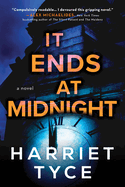
| Publisher: | Sourcebooks Landmark | |
| Genre: | Women, Psychological, Suspense, Thrillers, Fiction | |
| ISBN: | 9781728282107 | |
| Pub Date: | November 2023 | |
| Price: | $16.99 |
| Now in Paperback |
by Harriet Tyce
This may be some sort of record. The innocent-person-wrongly-accused story, the courtroom drama, the revenge plot: It Ends at Midnight by Harriet Tyce accommodates all three classic crime novel approaches while also incorporating two mainstays of the contemporary thriller--the social media scandal and the #MeToo reckoning. It sounds like a feat of narrative engineering, but Tyce makes it work.
Sylvie Munro, a London barrister turned deputy district judge, has one ambition: "the red sash and purple robes of the Crown Court judge." As It Ends at Midnight begins, she has won an appeal--"[j]ust what I needed for my judge's application"--and is luxuriating in her romance with her caterer boyfriend of six months. "There's a glowing future ahead," Sylvie thinks. In fact, well into the novel, readers would be under the impression that Sylvie hasn't a care in the world--if the chapters she narrates weren't intercut with accounts of a grisly crime committed in Edinburgh. The novel's mystery isn't just what happened; it's also who the victims are.
Tyce (Blood Orange; The Lies You Told) metes out information with practiced restraint, interweaving her current-day plot with flashbacks to something that happened more than 20 years earlier, something that Sylvie eventually admits is "the death that changed everything. I remember it now as if it were yesterday." The writing in It Ends at Midnight can be overripe, and readers may be a step ahead of Sylvie on one count--but not, to their eventual gasp-eliciting surprise, on another. --Nell Beram, author and freelance writer

| Publisher: | Penguin Books | |
| Genre: | 20th Century - World War II, Literary, Fiction, Historical | |
| ISBN: | 9780593653449 | |
| Pub Date: | November 2023 | |
| Price: | $19 |
| Now in Paperback |
by John Boyne
All the Broken Places by Irish novelist John Boyne is a cunning domestic drama with breathtaking plot twists, experienced through the eyes of a German woman desperate to escape an evil, shameful legacy: her father was one of Hitler's senior lieutenants, responsible for unimaginable atrocities during World War II.
Gretel Fernsby, Boyne's enigmatic 92-year-old narrator, is a force to be reckoned with. A widow in impressive physical and cognitive health, she lives independently in a grand apartment overlooking London's Hyde Park. She keeps to herself, her self-imposed exile concealing her family's haunting, troubled wartime past that would destroy her and her son if revealed. Guilt and remorse over her father's war crimes, as well as her own silence, are her constant companions.
Boyne's plot alternates between Gretel's life in present-day London and the postwar years in Berlin, Poland and Paris. Readers of his work will have encountered a much younger Gretel in his sensational young adult novel, The Boy in the Striped Pajamas. In All the Broken Places, a standalone sequel, Boyne (The House of Special Purpose; The Absolutist) has crafted a diabolically complex protagonist made vulnerable by a lifetime of lies. Gretel--exquisitely tender with Henry, the young boy who lives downstairs--demonstrates merciless hostility to Henry's father, Alex, a Hollywood producer who physically abuses his wife and son and who taunts Gretel by digging into her past. As Alex's treatment of Henry worsens and he comes dangerously close to exposing Gretel's secrets, she is faced with two terrifying choices, neither offering any hope of redemption. --Shahina Piyarali, reviewer
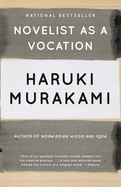
| Publisher: | Vintage | |
| Genre: | Biography & Autobiography, Literary Criticism, Personal Memoirs, Writing, General, Language Arts & Disciplines, Asian, Books & Reading | |
| ISBN: | 9781101974537 | |
| Pub Date: | November 2023 | |
| Price: | $17 |
| Now in Paperback |
by Haruki Murakami, trans. by Philip Gabriel, Ted Goossen
Jazz, cats, baseball, running and the Beatles: fans of Haruki Murakami (First Person Singular; Wind/Pinball; Colorless Tsukuru Tazaki and His Years of Pilgrimage) won't be shocked to discover that all of them make appearances in Novelist as a Vocation, a lively collection of 11 essays, translated from the Japanese by Philip Gabriel and Ted Goossen. Also appearing are opinions on the art of writing, all of them shared in Murakami's casual style. He calls the essays, first published in Japan in 2015, "records of undelivered speeches" about life as a novelist. That approach is evident in such lines as: "Next, I think I'd like to move on to talk about literary prizes." He discusses that and much more, with viewpoints likely to provoke debate, as when he states: "There is no need to study literature at the university level."
Amidst these challenges to prevailing wisdom, Murakami describes the path that led him to become a novelist, and offers plentiful insights into his craft, including his three requirements on what constitutes originality, the habits aspiring writers should follow, the factors he considers when determining the length and form of each work, and more. And he's cautiously hopeful: Only 5% of the populace reads literature, he guesses, but as long as "one in twenty is like us, I refuse to get overly worried about the future of the novel and the written word." Of his fellow novelists Murakami writes: "In a way, we are out of our minds." This genial collection offers one writer's perspective on how they got that way. --Michael Magras, freelance book reviewer
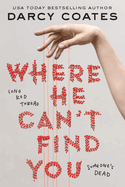
| Publisher: | Sourcebooks Fire | |
| Genre: | Paranormal, Occult & Supernatural, Horror, Ghost Stories, Thrillers & Suspense, Young Adult Fiction, Supernatural | |
| ISBN: | 9781728278940 | |
| Pub Date: | November 2023 | |
| Price: | $11.99 |
| Starred | Children's & Young Adult |
by Darcy Coates
Where He Can't Find You by Darcy Coates (The Whispering Dead) is the prolific adult author's first YA title, an eerie and viscerally frightening work of horror in which a former coal mining town is terrorized by an evil entity known as "the Stitcher."
Abby Ward lives in dull and lifeless Doubtful, Ill. For the past several decades, denizens of Doubtful have disappeared under mysterious circumstances, only for their dismembered body parts to be found days or weeks later, sewn together with bright red thread. Residents blame these disappearances on the Stitcher, an entity who some believe is a monster and others believe is an unassuming yet off-putting local man named Charles Vickers who makes an appearance at every crime scene. Abby and her friends--the Jackrabbits--try their best to keep each other safe, but when Abby's sister, Hope, is taken from her bedroom in the middle of the night, the Jackrabbits launch an investigation to discover the truth about the Stitcher and save Hope from its subterranean lair.
Where He Can't Find You is chilling and grotesque; throughout the novel, Coates is unapologetic in her use of body horror, describing tumor-ridden deer, decaying skin, and mutilated masses of flesh. But Coates does a great job of balancing the gorier aspects with moments of warmth between the characters. The result is a tapestry of fear, hope, cruelty, tenderness, terror, and delight, all stitched together with bright red thread. --Cade Williams, freelance book reviewer.
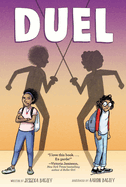
| Publisher: | Simon & Schuster Books for Young Readers | |
| Genre: | United States - African American & Black, People & Places, Humorous Stories, Humorous, Parents, Family, Juvenile Fiction, Comics & Graphic Novels | |
| ISBN: | 9781534496545 | |
| Pub Date: | November 2023 | |
| Price: | $14.99 |
| Starred | Children's & Young Adult |
by Jessixa Bagley, illust. by Aaron Bagley
Author Jessixa Bagley and illustrator Aaron Bagley's genuine and heartwarming middle-grade graphic novel Duel tells the story of an intense sibling rivalry that worsens after the death of their father.
Biracial sisters Gigi and Lucy have never attended the same school before and, since their fencer father died, they've been "at each other's throats." On their first day together at Butler Middle School, eighth-grader Gigi and sixth-grader Lucy get into a heated argument and Gigi trips Lucy in the cafeteria. Lucy challenges Gigi to a duel. ("Did you say duel?!" Gigi asks scornfully. "Fencers don't have duels--we have bouts.") Unfortunately for Lucy, she hasn't fenced since Dad died, while Gigi is on the school's fencing team. Both girls ready themselves for the battle, each reflecting on the loss of their father and his legacy.
Jessixa Bagley's first graphic novel as author is an ode to fencing. Each chapter opens with a fencing phrase, a sketch of the stance, and a description. As the story progresses, alternating between Gigi's and Lucy's endearing perspectives, so, too, do the fencing stances, as if in preparation for the bout. Jessixa Bagley (Laundry Day) touches heartstrings through the girls' expressions of grief, and uses temporal changes to round out her characters. Aaron Bagley (Vincent Comes Home) identifies the time switches through his ink and digital art, showing the present day in full-color illustrations with standardized panel borders, and displaying the past in wavy blue lines and wobbly panels. An excellent read for fans of Raina Telgemeier or Dan Santat's A First Time for Everything. --Kharissa Kenner, children's librarian, Bank Street School of Education
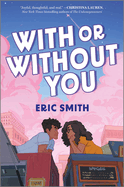
| Publisher: | Inkyard Press | |
| Genre: | Romantic Comedy, Cooking & Food, Parents, Romance, Family, Young Adult Fiction, Diversity & Multicultural | |
| ISBN: | 9781335458070 | |
| Pub Date: | November 2023 | |
| Price: | $19.99 |
| Children's & Young Adult |
by Eric Smith
Eric Smith's With or Without You is a delightful YA romcom about two Latinx teens caught in the middle of their families' Philly cheesesteak food truck rivalry.
Four years ago, Cindy Ortiz's family outbid Jordan Plaza's on a fancy food truck and secured the best parking spot in the Philadelphia, Pa., park. Ever since, the Plaza and Ortiz families have hated each other. Jordan and Cindy spent their high school years working in the family cheesesteak trucks, hurling insults at each other. It's all an act, though: the families "feud" because it drives sales, and Jordan and Cindy are in a relationship. Now that high school is over, they can finally step out publicly as a couple. But then their families are approached by a producer interested in turning their dispute into a pilot for a reality TV show. Jordan and Cindy know their families really need the money, but can their relationship survive this roadblock?
With or Without You is a delightful YA romance narrated by Jordan's and Cindy's first-person perspectives. Smith (The Geek's Guide to Dating; Don't Read the Comments) ably discusses relationships, family, guilt, finances, and debt through the interaction of his charming and relatable characters. The inclusion of reality TV-style confessionals creates some additional comedic relief. Along with great lessons about honesty and pursuing one's dreams, the excellent food descriptions may make readers want to go out and grab a cheesesteak. --Natasha Harris, freelance reviewer
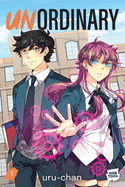
| Publisher: | HarperAlley | |
| Genre: | Superheroes, Young Adult Fiction, Comics & Graphic Novels, Action & Adventure | |
| ISBN: | 9780358467809 | |
| Pub Date: | November 2023 | |
| Price: | $19.99 |
| Children's & Young Adult |
by uru-chan
The action-packed WEBTOON series unOrdinary by uru-chan, with 5.9 million subscribers, is in print for the first time. The story follows John, an audacious teen without abilities, as he navigates the brutality of attending a high school where everyone else has a superpower.
"In this world, strength defines a person... and those without strength are crushed." John hoped that Wellston Private High School would be different from the rest of the world, but instead he's known as "the school zero" and attacked by those with power. Yet John doesn't abide the established "hierarchy." He fights back, defends bullied students, and speaks casually to "high-tiers," especially those he finds "a disgrace to society." John believes that powers should be used to bring peace; his father wrote unOrdinary, a banned book about a vigilante defending zeroes, that has inspired likeminded heroism. Now, these self-proclaimed superheroes are being murdered, and a fearful public wishes vigilantes would stop causing trouble.
John upholds values few others dare to consider: that even the weak hold greatness, and that strength does not mean superiority. His relentless grit, which lands him in disaster, is painfully addicting to witness. Uru-chan carefully balances action and stillness and ensures plentiful laughs with awkward asides and exchanges, over-the-top and deadpan facial expressions, written moods ("gloom"; "rage"), and added flair. Brilliant coloring lights up the page with students' energy bursts and gorgeous backgrounds, and the vibrant art of the intense fight scenes packs a punch. A magnificently illustrated and entertaining first volume. --Samantha Zaboski, freelance editor and reviewer